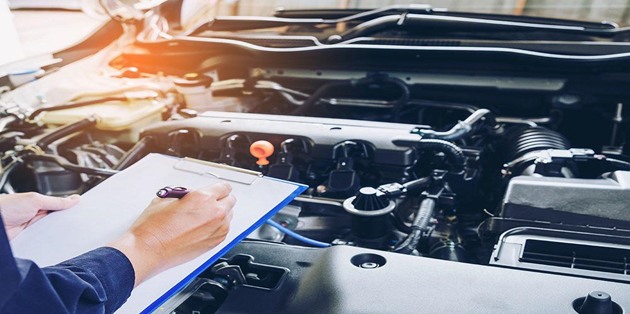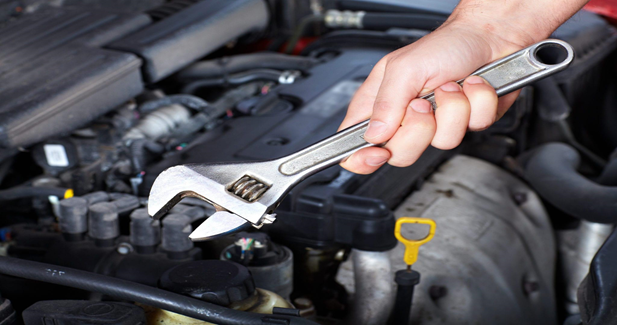Car Service in Canandaigua NY: Tips on Vehicle Maintenance
One of the most reassuring qualities of modern vehicles is that they need less-frequent service maintenance to keep it running. Changing condenser, breaker points, and spark plugs used to be a seasonal activity, and rust was considered normal as an unfortunate hazard of aging.
A lot of spark plugs can go more or less 100,000 miles before it needs to be changed. Electronic ignition has done away with condensers and points. Some vehicles have their suspensions, chassis, and transmissions lubed for life. Factory rust-through warranties usually run at least six months, even longer.
Want to know more about the ignition system? Check out https://en.wikipedia.org/wiki/Ignition_system for more information.
Not only that, but reliability has also improved dramatically. The result is that a lot of late-model trucks and cars should be able to run at least 200,000 miles with just regular maintenance. Listed below are some periodic checks and simple procedures people can do that can help them get there.
Examine engine oil regularly
Check your car’s engine oil regularly – at least once a month to make sure it is in excellent condition, whether to add oil or if they notice an oil leak. The vehicle should be parked on a leveled ground so that owners can get the right and accurate dipstick reading. Make sure not to overfill, and if the vehicle does leak, find the hole and fix it as soon as possible.
Inspect the tire air pressure
At least once a month or before any road trips, make sure to check the car tire air pressure by using an accurate tire-pressure gauge, that includes the spare tire. Make sure to check the tires when they are cold or before it has been driven or after a couple of miles or kilometers of driving.
Use the pressure recommended by the manufacturer, not the maximum pressure written on the sidewall of the tire. Recommended tire pressure is usually found in the glove compartment, front door jamb, or in the owner’s manual. Also, make sure to check the tires for uneven or abnormal wear, sidewall bulges, and any tear that you can see.
A lot of experts advise that digital pressure gauge that costs more or less $30 is usually your best bet because they can provide accurate readings or none at all. A lot of pencil-type gauges that cost around $10 to $15 are also good to check tire pressure. Vehicle owners need to remember that to inspect the air pressure in spare tires, which is usually 60 psi, they need to and accurate gauge that goes higher than 60 psi.
Wash the vehicle
If you can, try washing your vehicle every week. Wash the body, hose out the undercarriage, and fender wells to remove any dirt, road salt, and grime. It is time to wax the automobile finish when water beads are starting to form bigger than a quarter.
Examine the air filter
Make sure to remove the air filter and look at it through the light. If you do not see the light, you need to replace it as soon as possible. Regardless, car owners need to follow the recommended maintenance intervals.

Inspect exhaust system regularly
If you are willing to check the underneath of the vehicle, examine for any rusted exhaust parts that may need to be replaced. Not only that, make sure to tighten loose clamps. You can do this while the automobile is up on the ramp for a better look.
If the shop changes the oil of the vehicle, have them check the exhaust system. Listen to any changes in the sound of the exhaust when driving. It is usually advisable to replace the entire system all at once instead of repairing different sections at different times.
For tips and better understanding of automobile maintenance, read more here, or visit the manufacturer website, or any forum sites related to the topic.
Inspect the brakes
For a lot of people, it makes a lot of sense to have the vehicle a shop inspects and service its brakes. If the owner handles their brake work, they need to remove all wheels and check the brake system. Replace the excessively worn-out brake pad or lining, and replace or machined the badly scored drum or rotors. The brakes need to be regularly checked, at least twice a year, especially if the car has been driven for many miles.
Replace the drive hoses and belts
Make sure to do this at least once every two to three years, even if they do not show wear and tear. If the belt becomes noisier than usual, have it checked and adjusted if necessary.
Check and change timing belts
If the car has a belt, stick to the manufacturer’s replacement interval recommendation – usually, they recommend to change timing belts every 60,000 to 80,000 miles. Read the owner’s manual or ask the dealer for any tips. Failure to change the belts can result in expensive engine repair if it breaks. Out of all the car components, the brake system is considered one of the most important ones. Making sure it works smoothly and properly is very important for the safety of the people inside the automobile and the people around it.



Comments are closed.